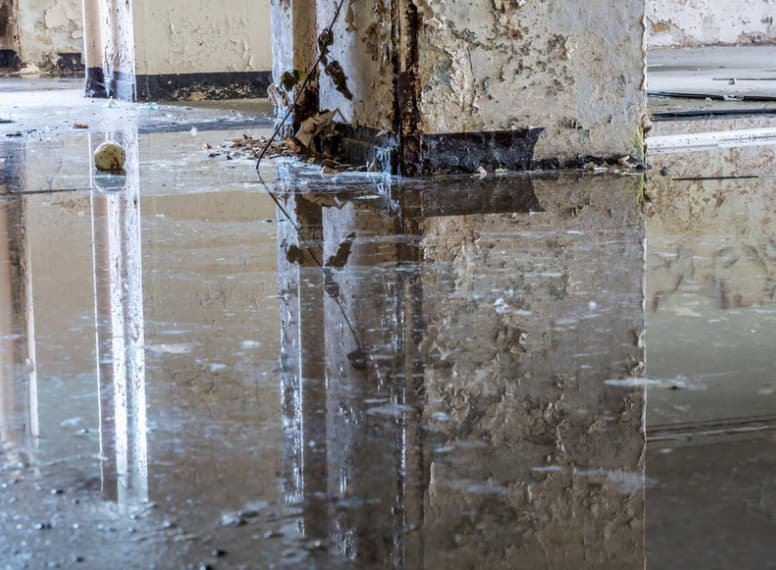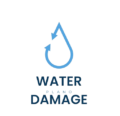Black water is a term that describes the most contaminated and dangerous category of water damage. Unlike clean water from a leaky faucet or even gray water from a washing machine, black water contains harmful substances, ranging from bacterial infections to chemical pollutants. It typically originates from sewage spills, overflowing rivers with fecal matter, or any standing water that has begun to support bacterial growth. Awareness and prompt action are crucial when dealing with black water due to its potential to cause severe health risks and property damage.
Handling black water damage requires professional restoration services, as this type of contamination involves more than just water removal.
It necessitates specialized cleaning, decontamination, and drying processes. Water damage restoration professionals are equipped with the tools and expertise needed to safely clean and restore areas affected by black water.
They also help prevent future incidents by identifying the source of the problem and suggesting appropriate measures to avoid a recurrence. Homeowners and property managers need to recognize signs of black water damage and understand the urgency with which it requires addressing to protect health, property, and the environment. our water damage restoration company in Plano is here to help.
Key Takeaways
- Black water is heavily contaminated and poses severe health risks.
- Professional restoration services are required for safe cleanup.
- Understanding and quick action are key to preventing further damage.
Understanding Black Water

When it comes to water damage, not all water is created equal. One of the most hazardous types is known as black water, which presents serious health risks due to its contamination levels.
Classification of Water Damage
Water damage is typically categorized into three classifications:
- Clean Water (Category 1): This water originates from a sanitary source and poses no substantial risk if exposed to or consumed by humans.
- Gray Water (Category 2): This type includes water that contains significant contamination and has the potential to cause discomfort or sickness if ingested or contacted by humans.
- Black Water (Category 3): The most severe, black water is grossly contaminated. It can include sewage, rising flood waters, and water from natural disasters, carrying pathogens and other harmful bacteria.
Distinguishing Black Water from Gray Water
Distinguishing between black and gray water is critical for safety and health. Black water contains harmful bacteria and pathogens that can lead to serious illness. In contrast, gray water, although not potable, typically comes from sources like sinks, showers, and appliances, containing lower levels of contaminants.
Components and Characteristics of Black Water
Black water is characterized by its components which can include, but are not limited to:
- Organic Matter: Decaying plant and animal residues that contribute to the black coloration.
- Harmful Bacteria and Pathogens: These can cause disease and are often present due to fecal matter and sewage content.
- Chemicals: Household and industrial chemicals may also be present, contributing to the hazardous nature of black water.
- Minerals: Sometimes, black water can contain minerals that are not typically harmful, but their presence indicates heavy contamination.
It’s important to note that black water can adversely affect drinking water supplies, rendering the clean water unsafe. The presence of fulvic acid and other natural compounds often indicate that the water contains a high concentration of organic matter. In the case of black alkaline water, these organic compounds can make the water highly alkaline, which still doesn’t render it safe for consumption or use. Immediate removal and remediation by professionals are mandatory due to the toxic nature of black water.
Sources of Black Water
Black water is a type of wastewater that is contaminated with hazardous materials, including human waste, faecal matter, and untreated sewage. Understanding its sources is crucial for effective water damage restoration and minimizing health risks.
Household Sources
Household sources of black water primarily include fixtures and appliances such as toilets and washing machines. When a toilet overflows or sewage backs up due to a blockage in the sewer line, it can lead to raw sewage spilling into the home environment. This sewage waste represents a significant health hazard due to the pathogens it may contain.
Similarly, a malfunctioning washing machine can produce black water if there is contamination with fecal matter or sewage. In homes with a sewage recycling system or septic tank, failures or overflows can also lead to the discharge of black water. It is important to distinguish black water from regular water or “grey water,” which comes from sources like sinks and showers and is less contaminated.
Industrial and Environmental Sources
Beyond the household, industrial and environmental sources contribute to black water contamination. Industrial facilities may discharge waste water that contains a variety of chemicals and hazardous materials, making it a complex issue for wastewater treatment plants to manage. If these facilities experience a spill or a system breach, it can result in black water entering the natural environment.
Environmental events, such as floods, can also create widespread black water conditions by combining with sewage overflow from municipal systems, carrying a mix of sewage waste, human waste, and other contaminants across communities. Such events stress the importance of a swift response to mitigate the spread of contamination and to safeguard public health.
Health and Safety Risks
Black water damage poses significant health and safety risks due to its highly contaminated nature. It typically contains a variety of harmful bacteria, pathogens, and hazardous materials that can affect human health if one comes into contact with the affected area.
Exposure Hazards
Contaminants and Pathogens: When an individual is exposed to black water, they encounter a multitude of harmful microorganisms. This type of water is known for containing E. coli and Campylobacter, which can lead to severe gastrointestinal illness. Moreover, contamination can stem from dangerous chemicals and biohazards, such as methane gas and toxic algae, increasing the risk of poisoning and infections.
Affected Areas: The hazardous nature of black water makes any affected area a hotspot for contamination. Surfaces and materials that come into contact with it can harbor mold growth and pathogens, complicating cleanup efforts and escalating health risks.
Long-Term Effects on Health
Harmful Bacteria and Mold: The long-term health effects of exposure to black water should not be underestimated. Prolonged exposure to harmful bacteria and mold can lead to chronic health issues. Breathing in or ingesting contaminants can result in a variety of symptoms ranging from respiratory problems to more serious conditions that may emerge over time.
Pathogen Invasion: Pathogens in black water, such as parasites and fungi, have the potential to linger in the human body, sometimes taking residence and causing illness long after the initial exposure. Delayed health effects underscore the importance of immediate and thorough remediation of black water incidents.
Water Damage Restoration Process
The water damage restoration process is a critical operation especially when dealing with black water, which presents significant health risks. This methodical procedure ensures the area is safe, clean, and restored to its pre-damage condition.
Initial Assessment and Inspection
Professionals begin with a thorough assessment of the water damage to determine the severity and type of water involved. For black water—contaminated by harmful substances—this step is crucial in planning a safe and effective removal process. They inspect the affected area, including hidden spaces where moisture may be trapped.
Black Water Removal
The removal of black water is performed with urgency due to its hazardous nature. Utilizing powerful pumps and vacuums, emergency services quickly extract the water to halt further contamination. This stage may involve collaboration with a treatment plant to ensure proper disposal and aeration of the black water.
Drying and Dehumidifying the Affected Area
Once water is extracted, drying and dehumidifying begin, targeting residual moisture. Industrial dehumidifiers and air movers play a crucial role in preventing mold growth and additional damage. This process can take several days, depending on the extent of water penetration and the size of the area.
Sanitizing and Cleaning
To guarantee the safety of the environment, the affected area undergoes thorough sanitation. Professionals use antimicrobial treatments and disinfectants to clean surfaces and materials exposed to black water. Special attention is given to porous materials where contaminants could linger.
Restoration and Repair
The final stage involves restoration and repair, which may encompass minor repairs like drywall replacement or could extend to major reconstructions of entire rooms. The aim is to bring back the structural integrity and aesthetic of the property, ensuring it is free from any signs of water damage or health hazards associated with black water.
Preventive Measures and Solutions
Mitigating the risks of black water damage requires strategic planning and implementation of both structural and treatment solutions. Protecting homes and buildings from contamination, as well as employing the latest in wastewater treatment can effectively manage and recycle black water.
Prevention in Homes and Buildings
Proactive maintenance is key to preventing black water incidents in residential and commercial properties. Regular inspection by qualified plumbers ensures that all pipe connections are intact and sewage systems are functioning correctly. Property owners should install backflow prevention devices to avert sewage backflows during flooding events. Importantly, awareness of what constitutes greywater and black water is crucial for effective wastewater segregation and treatment.
- Install leak detectors to alert property owners of potential issues.
- Conduct routine checks on sump pumps and sewage systems.
- Replace aging infrastructure prone to leaks and breaks.
Wastewater Treatment Advances
Advancements in wastewater treatment technology play a vital role in converting black water to safe, reusable water. Modern wastewater treatment plants encompass sophisticated processes, converting wastewater into potable water through stages of filtration and disinfection. Recycled blackwater can be repurposed for non-potable uses, thereby reducing the demand for freshwater resources.
- Utilize membrane bioreactors (MBRs) for high-efficiency treatment.
- Implement greywater systems to treat and reuse water from sinks, showers, and laundries.
- Adopt smart systems for real-time monitoring and adjustment of treatment processes.
